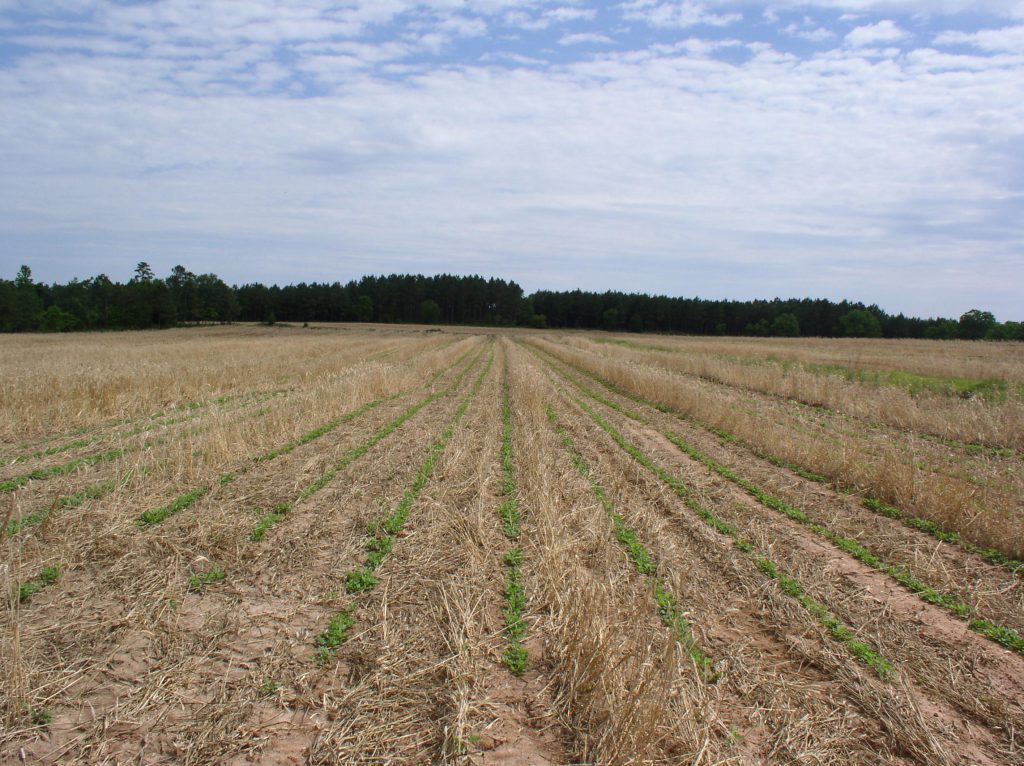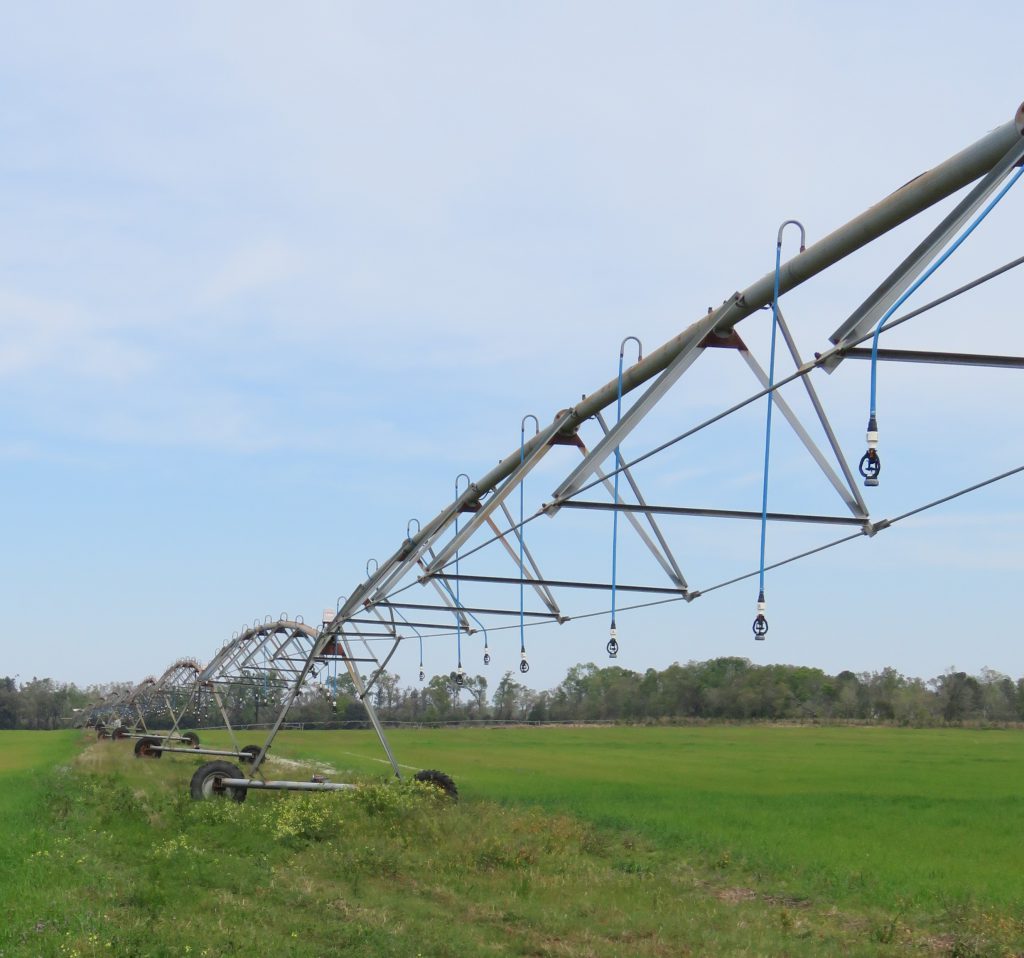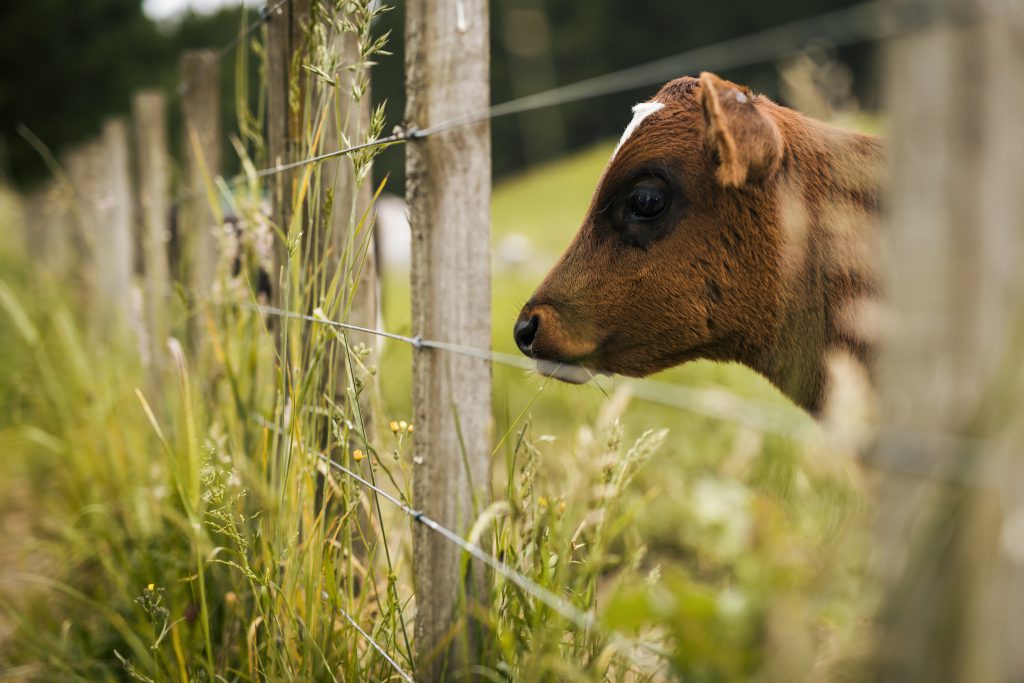
Strip-tillage or conservation tillage is an effective BMP in our area. Here, peanuts are planted into the previous fall/winter cover crop. Benefits include reduced soil erosion, increased soil organic matter and soil moisture retention. Photo credit: C. Jordan, NRCS.
–
Farmers and ranchers have implemented Best Management Practices (BMPs) that maintain or improve water quality, quantity and soil conditions on their lands for many years. Several agencies in our region recognize this and offer financial assistance to defer the cost of implementation. Producers are encouraged to work with agency staff to determine which practices are feasible on their operation.
Implementing BMPs is voluntary in most areas of the Panhandle, but for producers in an area with a Basin Management Action Plan (BMAP) like the Jackson Blue Springs Basin, the 2016 Water Bill requires BMPs be implemented, and verified by FDACS.
–
Florida Department of Agriculture and Consumer Services (FDACS)
FDACS offers cost-share funds to producers enrolled in their BMP program. Funding is largely for equipment purchases.

FDACS, NRCS and the NW Florida Water Management District provide cost-share funds to improve irrigation efficiency. Photo: A. Albertin
Funding falls under three broad BMP categories: (1) nutrient management, (2) irrigation management, and (3) water resource protection. Examples of funded equipment for improved nutrient management include conservation tillage equipment, GPS guidance systems, variable rate applicators, and banders for side dressing. To improve irrigation efficiency they provide cost-share for soil moisture sensors, irrigation retrofits, nozzle packages, smart irrigation control panels, and more. BMPs for water resource protection include cattle exclusion fences and alternate water sources, such as wells and trough systems. FDACS field technicians work one-on-one with land producers to develop a feasible BMP plan for each individual operation.
FDACS funds 75% of the equipment cost, which they reimburse once the producer purchases the item. There is a $50,000 cap per producer or entity per fiscal year.
Additionally, FDACS received funds through the RESTORE Act for BMP implementation. These funds are available to producers in the Apalachicola Watershed only, which includes all or most of Jackson, Calhoun, Gadsden, Liberty, Gulf and Franklin Counties, as well as the easternmost part of Washington County, and northeast Bay County. RESTORE funds provide 75% cost-share for:
1. The same items that the general cost-share program covers, detailed above. The difference is that there is no cap on cost-share dollars per producer.
2. Upgrades to increase on-farm energy efficiency for all types of operations. A free energy audit is conducted on the operation outlining how to improve efficiency. The producer can then choose to apply for cost share dollars ($25,000 cap) to implement some or all recommendations. Examples include conversion of diesel pumps to electric for center pivots, refrigeration upgrades for vegetable production and dairies, lighting upgrades, and some solar options.
Cost-share is distributed on a case-by-case basis. Producers must be enrolled in the BMP Program to receive funds. Contact information your local FDACS field offices and technicians. For information about the FDACS RESTORE funds, contact Justin Bryan at the Jackson County Extension Services Office, Tel: 850-482-9620, Cell: 850-661-1674; Justin.Bryan@fdacs.gov
–
USDA-Natural Resources Conservation Service (NRCS)

Cattle exclusion fences help protect stream habitat and water quality. Photo credit: V. Crain, SARP.
NRCS offers financial assistance for producers through three programs: EQIP (General Environmental Quality Incentives Program), RCPP (Regional Conservation Partnership Program) and the CSP (Conservation Stewardship Program). NRCS staff work with farmers and ranchers to develop a conservation plan to address natural resource concerns for individual operations. Depending on the producer’s objectives, these plans can include erosion control and improving soil conditions, improved nutrient management and water quality, increased water-use efficiency, and improving wildlife habitat.
The conservation plan outlines practices to achieve specified goals, and NRCS provides technical and financial assistance to carry them out. For example, NRCS provides financial assistance for cover crops, no-till management, cattle exclusion fences along streams and alternative watering systems, including wells. Other funded BMPs include soil sampling, irrigation retrofits, cross-fencing for grazing management, waste storage facilities for dairies, forest stand improvement, increasing pollinators and improving bird habitat. These are just a few examples – there are many more.
Financial assistance is provided at a flat rate for a particular practice (per foot for fencing, per acre for weed treatment, per item for a well, etc.). They generally do not offer financial assistance for equipment. Applications for financial assistance are accepted year-round, but are funding following batching deadlines.
Contact your local NRCS office and staff
–
The Northwest Florida Water Management District (NWFWMD)
The NWFWMD’s BMP cost-share program is for producers within the Jackson Blue Springs Basin, and focuses on enhanced irrigation practices. Producers must be enrolled in the FDACS BMP Program to qualify.
The District reimburses 75% of the cost of eligible BMPs including converting from a high to low pressure irrigation system, flow meters, Veris soil mapping, precision soil sampling, variable rate irrigation (speed control and zone control), soil moisture sensors, irrigation system automation and more.
The District provides an interactive map where you can check to see if your farm is in the Jackson Blue Springs Basin, as well as more information on their Jackson Blue Spring Grant Funding Programs website. For more information, contact Dave Cambron at (850) 539-5999 or by email at Dave.Cambron@nwfwater.com.
–
Hurricane Michael Block Grants
We are all still waiting to receive more information on the Timber & Irrigation Block Grants, which are expected to include funding for producers that suffered timber losses and damaged irrigation equipment due to Hurricane Michael in 2018. I’ve been told that we should know more by mid-summer. We’ll keep you posted!
- What to Do if Sinkholes Open on Your Property - November 15, 2024
- Crop Farmers Implementing BMPs in the Chipola River Basin - May 24, 2024
- The Granberry Farm: Sustainably Managing a Cattle Ranch in the Chipola River Basin - January 5, 2024
